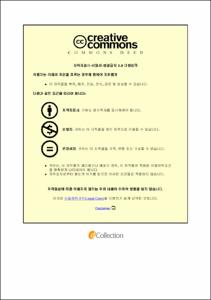펠티에 소자를 적용한 사출성형품의 휨 특성에 관한 연구
- Abstract
- Plastic injection parts are used for automobiles, electronic products, machinery, cellular phones and consumer products. Injection-molded parts can have a complicated shape, do not need pose-processing and have an advantage of mass production. Molding defects occur in plastic parts according to changes in material properties, complicated molding shapes, and process parameters. The injection molding defect, molded sink mark, affects the dimensions and warpage of the product. The molded sink mark is caused by crystallization, elastic recovery of a injection part, crystalline and amorphous polymer, or molding operation conditions (packing pressure, packing time, resin temperature, and mold temperature). The sink mark produces warpage of plastic part.
A method to improve the warpage of the plastic part is removal of residual stress of the plastic product. by making non-uniform cooling occurring in the injection molding process into uniform cooling. In this thesis, the rapid heating and cooling device was developed using a peltier module for uniform cooling.
A heat sink was designed to remove the heat generated for the purpose of increasing the efficiency of the peltier module. The efficiency was compared between the heat sink of Pine fins and that of Pin fins in an tunnel structure at each natural and forced convections. It was verified with computer-aided engineering (CAE) technology and experiments. As a result, the heat sink of Pine fins has a low temperature distribution toward the fin center both in the forced and the natural convection. The forced convection had better efficiency than the natural one regardless of the configuration.
A rapid cooling and heating device (RCHD) was manufactured and compared with the traditional water cooling device (TWCD) method in warpage leading to analysis results. The materials used were crystalline polypropylene and amorphous acrylonitrile-butadiene-styrene polymer. Variations in warpage were compared according to the molding process parameters such as packing pressure, packing time, resin temperature, and mold temperature. Molecular arrangement of injection-molding parts was examined with chemical etching against cooling time and mold temperature.
It can be shown that the RCHD method has a lower warpage than the TWCD method and consequently a more uniform cooling for amorphous acrylonitrile-butadiene-styrene polymer. Injection molded parts of amorphous acrylonitrile-butadiene-styrene polymer were examined after chemical etching. The injection-molding parts by the RCHD method have less distribution of white areas than those by the TWCD method and consequently it can be found that the RCHD method produces a uniform cooling.
The distribution state of the acrylonitrile-butadiene-styrene polymer was confirmed Through the Scanning electron microscope. In the TWCD method the distribution state of the polymer be densely distributed, and RCHD method be distributed wider than TWCD method. this is that injection molded parts be seen that cooling was made uniformly. As the temperature of the mold is gradually progress, The particles of the polymer is increased, this is that internal stress was reduced.
Through of experimental method(DOE), Optimum molding condition of the injection molding are a mold temperature of 75℃, holding time 2.5sec, cooling time 20sec, and the holding pressure for 20kg/cm2 in the ABS resin. and mold temperature of 35℃, holding time 2.5sec, cooling time 20sec, and the holding pressure for 20kg/cm2 in the PP resin.
- Issued Date
- 2015
- Awarded Date
- 2015. 8
- Type
- Dissertation
- Publisher
- 부경대대학원
- Affiliation
- 기계과
- Department
- 대학원 기계공학과
- Advisor
- 김태완교수
- Table Of Contents
- 제 1 장 서론 1
1.1 연구배경 1
1.2 연구동향 4
1.3 연구목적 및 내용 6
1.3.1 연구목적 6
1.3.2 연구내용 8
제 2 장 사출성형 제품의 휨 11
2.1 사출성형 11
2.1.1 사출성형공정 11
2.2 성형수축 및 휨의 발생 요인 15
2.2.1 성형수축의 발생 요인 15
2.2.2 휨의 발생 요인 17
2.3 냉각시스템 19
2.3.1 금형 냉각 시스템 요소 19
2.3.2 냉각채널의 종류 19
2.4 금형의 냉각시간 23
2.5 금형의 열전달 26
2.5.1 캐비티 내의 열전달 26
2.6 열전도 방정식 30
제 3 장 급속냉각·가열 장치 35
3.1 히트싱크에 대한 열 해석 35
3.1.1 히트싱크 설계 35
3.1.2 히트싱크 모델링 36
3.2 히트싱크에 대한 수치해석결과 39
3.2.1 자연대류에서 히트싱크 온도분포 39
3.2.2 강제대류에서 히트싱크 온도분포 41
3.2.3 형상에 따른 자연대류와 강제대류의 온도분포 비교 43
3.3 펠티에 효과 46
3.4 실험장치 및 실험방법 48
3.4.1 실험장치 48
3.4.2 실험방법 51
3.5 결과 및 고찰 52
3.5.1 형상에 따른 냉각 52
3.5.2 형상에 따른 가열 57
3.6 RCHD 구동원리 62
3.7 RCHD 제작 64
3.8 RCHD 성능실험 67
3.8.1 실험장치 및 방법 67
3.8.2 결과 및 고찰 68
제 4 장 열 해석 69
4.1 열 해석 모델링 69
4.2 수치해석결과 71
4.2.1 시간에 따른 영향 71
4.2.2 TWCD와 RCHD의 비교 74
제 5 장 사출성형품의 휨 77
5.1 실험장치 및 실험방법77
5.1.1 재료 77
5.1.2 시편형상 및 금형 79
5.1.3 사출성형용 금형 80
5.1.4 사출성형기 81
5.1.5 사출성형 실험방법 81
5.2 휨의 측정방법 83
5.3 실험 결과 85
5.3.1 ABS 수지 85
5.3.2 PP 수지 92
5.3.3 유동패턴 분석 99
5.3.4 SEM분석 106
5.4. 실험계획법을 통한 최적 사출성형조건 121
제 6 장 결론 128
참고문헌 131
Abstract 139
- Degree
- Doctor
- Files in This Item:
-
-
Download
 펠티에 소자를 적용한 사출성형품의 휨 특성에 관한 연구.pdf
기타 데이터 / 8.91 MB / Adobe PDF
펠티에 소자를 적용한 사출성형품의 휨 특성에 관한 연구.pdf
기타 데이터 / 8.91 MB / Adobe PDF
-
Items in Repository are protected by copyright, with all rights reserved, unless otherwise indicated.